John Hurrell – 7 September, 2018
Even though they allude to post-impressionism, McMillan likes to play with out of focus forms, hot incandescent flares, truncated rectangles and wrinkled dribbly picture planes. These deliberately vague works make interesting objects that are untypical of paintings. Non digital, alluding to science fiction and future time—and subtly ominous— some reference looking out of speeding cars through rain-drenched windscreens.
Almost without exception, everybody loves the paintings of Georges Seurat, and while to allude to him is sort of obvious and a little bit corny-maybe even crass—the ‘pointillist’ cityscape paintings by Gary McMillan currently being presented at Fox Jensen McCory are so beautifully executed you can’t help but be drawn in. Their delicate blurry haze is captivating—but not in your face—and from a distance, they are easy to mistake for photographs. They have a greyness that makes you think you are looking at emulsion on paper. Until you get close.
This perfection of execution-the intriguing surface— is reminiscent of Australian Papunya paintings, but made with a fine brush of about a millimetre thickness, and not with cotton buds. The ‘pointillism’ is like a generous scattering of hundreds and thousands, but without an optical mixing of primaries. The varied tertiary and secondary hues within McMillan’s tonal matching are fastidious. The dots are cleanly applied and never smeared.
Even though they allude to post-impressionism, McMillan likes to play with out of focus forms, hot incandescent flares, truncated rectangles and wrinkled dribbly picture planes. These deliberately vague works make interesting objects that are untypical of paintings. Non digital, alluding to science fiction and future time—and subtly ominous— some reference looking out of speeding cars through rain-drenched windscreens.
Others are much more abstract. They have a hint of self-reflectivity with rolling circles lined up on the grey windscreens, spinning discs that could be enlarged dots. These granular blurry works seem to be about vision and looking. They might also be overcast days in say, fog-covered Rita Angus Hawke’s Bay landscapes, sufficiently murky and dark as to imply an impending primal opacity, with embedded spinning buttons in the picture plane. Oblique, mysterious, and suggestive, they compress distance, time and categories—confounding art history, past, present and future; urban and rural; painting and photography.
John Hurrell
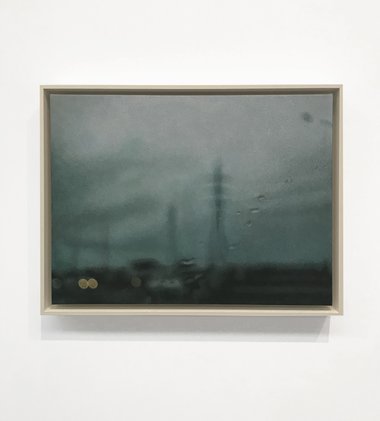
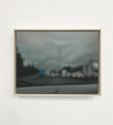
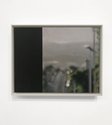
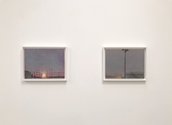

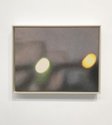
 Advertising in this column
Advertising in this column Two Rooms presents a program of residencies and projects
Two Rooms presents a program of residencies and projects



This Discussion has 0 comments.
Comment
Participate
Register to Participate.
Sign in
Sign in to an existing account.